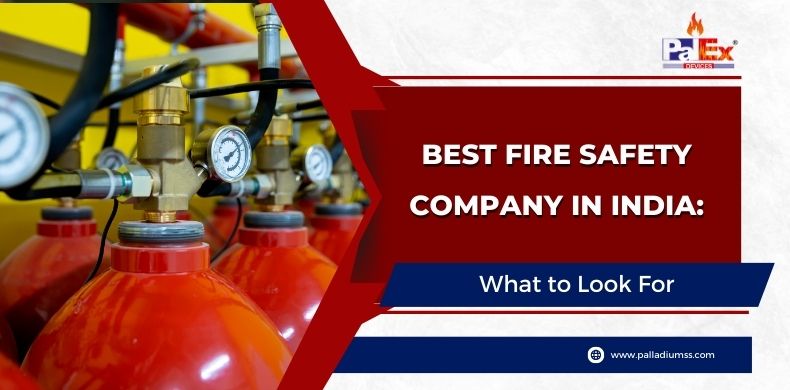Fire safety is something no business or homeowner can take lightly. Whether you run a small shop, a large factory, an office, or even a residential building, the right fire safety company can make all the difference. But with so many companies in India offering fire alarms, extinguishers, hydrant systems, and safety services, how do you choose the best one?
The truth is, a good fire safety partner is not just someone who sells products—they help protect lives, property, and peace of mind. So, if you’re searching for the best fire safety company in India, here’s what you should really be looking for.
A Company With Strong Experience and Reputation
Fire safety is not something you want to trust to a new or unproven company.
Experience matters. Reputation matters even more.
When choosing a company, check:
- How long they’ve been in business
- What projects they have completed
- Their client list
- Customer reviews
- Industry certifications
Experienced companies understand different building types, fire risks, and safety norms. They don’t just install equipment—they know how to design complete solutions.
Complete Range of Fire Safety Products
A top fire safety company should be a one-stop solution. Instead of buying each product from different sellers, it’s better to choose a company that offers everything under one roof.
Look for companies that provide:
- Fire extinguishers (ABC, CO₂, Foam, Clean Agent)
- Fire alarm panels
- Smoke detectors and heat detectors
- Manual call points and hooters
- Fire hydrant systems
- Sprinkler systems
- Fire blankets
- Fire doors
- Signage and emergency lights
The more complete the range, the easier it is to plan a proper fire protection system.
Customised Fire Safety Solutions
No two buildings are the same.
A good fire safety company doesn’t give “one-size-fits-all” solutions. They inspect your premises, understand your risks, and design a system that actually works for your environment.
For example:
- Offices need smoke detectors and alarms
- Factories need heat detectors and hydrants
- Warehouses need beam detectors and sprinklers
- Kitchens need wet chemical extinguishers
- Server rooms need clean agent suppression systems
A reliable company recommends the right product based on need—not based on profit.
Certified Products That Meet Safety Standards
When it comes to fire equipment, certification is everything.
Low-quality or fake fire safety products can fail when you need them most.
A trustworthy fire safety company in India will provide products that follow:
- BIS standards
- ISI certification
- NBC fire guidelines
- CE certification (for imported items)
- ISO standards
Always ask for certificates and proof.
If a company hesitates, that’s a red flag.
Skilled Technical Team
Installing fire safety equipment is not like fixing a light bulb.
It requires:
- Technical knowledge
- Proper planning
- Safety compliance
- Experience in wiring, sensors, water pressure, and more
The best fire safety companies in India have trained engineers, certified technicians, and skilled installers. They handle everything safely and professionally.
Strong After-Sales Support and Maintenance
Fire safety is not a one-time job.
Even the best systems need maintenance.
A good company should provide:
- Annual maintenance contracts (AMC)
- Regular inspections
- Spare parts availability
- Quick repair service
- 24/7 customer support
Choosing the best fire safety company in India is not just about comparing prices. It’s about choosing a partner who understands safety, compliance, quality, and long-term support.
Here’s what truly matters in the end:
- A reliable name
- Certified products
- Skilled team
- Honest guidance
- Good maintenance service
- Customized solutions
Fire safety is an investment in protection—of your people, your property, and your future.
So take your time, evaluate your options, and choose a company that gives you confidence and peace of mind.










